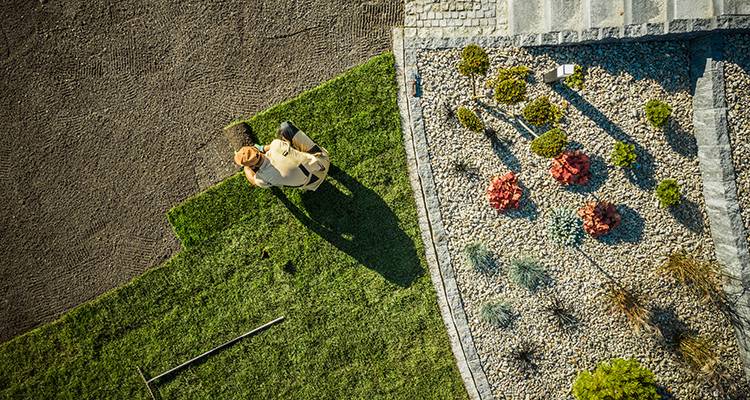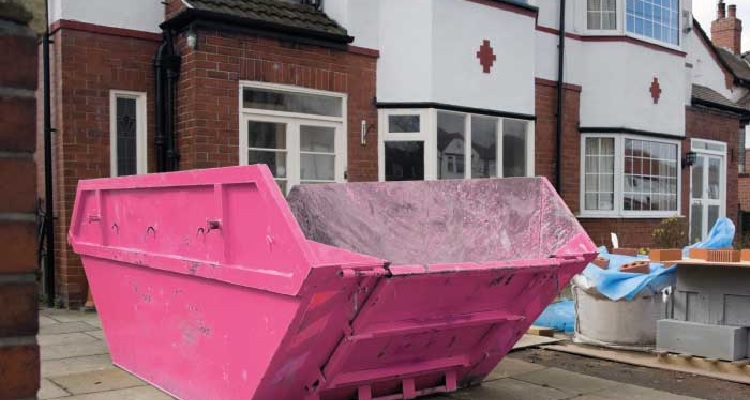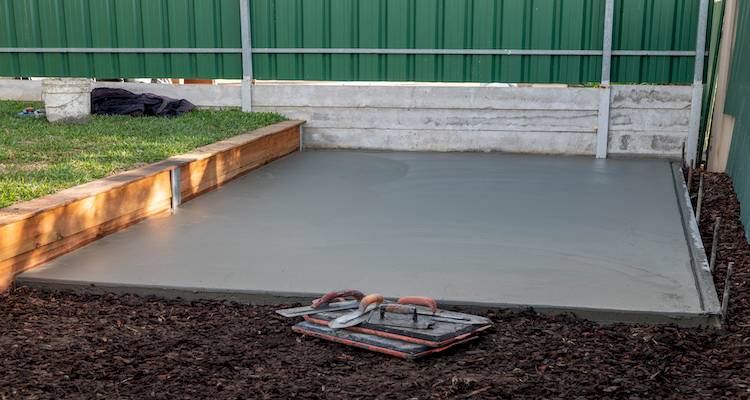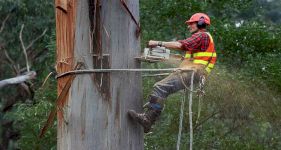New Roof Costs
In this guide, we’ll look at what's involved in fitting a new roof, and what it tends to cost and will explore other related topics, such as whether you can do it yourself.
Get a quote for a new roof from one of MyJobQuote's tradespeople.
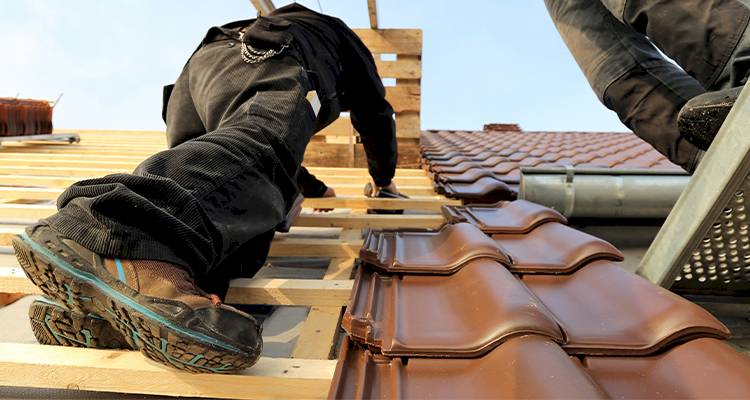
£5,000
Table of Contents
- How Much Does a New Roof Cost?
- Supply Only Costs
- Additional Costs
- Labour Costs and Timescales
- Cost Factors of Installing a New Roof
- What's Involved in Fitting a Roof?
- Can I Install a New Roof Myself?
- Building Regulations & Planning Permission for Roof Installation
- Types of Roofs
- Hiring Contractors to Install a New Roof Checklist
- FAQs
- Sources
How Much Does a New Roof Cost?
A vital component of any property, a roof protects you and your family from nature's harshest elements, such as wind, rain, and even lightning. However, did you know that your roof is also the most vulnerable to severe damage? As a result, ensuring that your roof is in excellent condition is critical.
If you neglect maintenance or repairs for an extended period, re-roofing can become prohibitively expensive. In addition, you may need to replace someone from time to time, which can be draining and time-consuming. As a result, we will go over the various costs of a new roof and what you should assume when having one installed.
The cost of your roof project will be determined by two factors: the size of the roof and the material used. A felted garage roof, for example, will be much less expensive than a slate roof for a four-bedroom detached home.
So, what is the cost of installing a new roof? The average cost of a roof replacement in the UK will be between £5,000 and £6,000. At the low end of the scale, replacing the felt roof on a garage should cost around £1,000, whereas replacing all the slate tiles on a large family home could cost £12,000. New roof prices in London and the southeast may be higher.
The only way of finding out how much your new roof will cost is to request some estimates. Because every house is unique, averages become so general that they lose some meaning. The size of the roof is proportional to the size of the house and the number of roof plates.
The materials you use and the quality of those materials. If you want to keep the current tiles because they are historical, the cost of carefully removing and stacking them for re-use may be more expensive due to labour than re-roofing with new materials. The size of the tiles also matters; smaller tiles take longer to install and increase labour hours.
Is it necessary to replace any of the support structures due to rot? The height of the house and the amount of scaffolding that is required. The design of the roof's complexity, whether you're upgrading or restyling the roof to add features like a chimney and dormer windows for a loft conversion or installing roof tile vents or rigid eaves.
Where you live in the country – any construction work is more expensive in metropolitan areas, usually in London, where the cost of living is higher.
Purchasing and installing a new roof increases the property value of your home and is one improvement that many people make before selling or building a house. Some estimates show that this could raise your ROI (Return on Investment) by more than 50%, more than a new kitchen, so it's something to consider when deciding on a new roof.
When re-roofing, several factors contribute to increasing the value of your property. To begin with, replacing it will make the roof last longer and function better. You should try and get the best components and workmanship possible for this, as this will improve the build quality and increase the value when it comes time to sell.
New Roof Prices
If you want the answer to "how much does a new roof cost?", read on. The table below will break down the cost of a new roof:
| Job Description | Type of Roof | Supply and Installation Costs |
|---|---|---|
| Semi-detached home | Hip roof | £4,250 - £4,750 |
| Semi-detached home | Two valley hip roofs | £5,750 - £6,250 |
| Detached home | Hip roof | £5,250 - £5,750 |
| Detached home | Two valley hip roofs | £6,750 - £7,250 |
| Replacement costs | Flat roof | £50 - £90 per m2 |
| Gabled roof | Standard roof | £3,250 - £3,750 |
| Gabled roof | Two valley roofs | £4,750 - £5,250 |
Supply Only Costs
Choosing the right material for your new roof is difficult, but calculating how much material you'll need adds another layer of difficulty. So here, we will only discuss supply costs and how to calculate how much material you will require so that if you are purchasing your own, you will know how much you will require!
You must first determine the length of your roof. This is the length of your roof's ridge from end to end. The next step is to determine the slope height of your roof. This is the distance between your roof deck and the apex, not the eaves to the ridge.
If you don't know these measurements, you can usually find them on the building plans that came with the property when you bought it. If you don't have these, contact your local council, who should be able to provide you with building plans for your property.
To calculate your roof area, multiply the length of your roof by the height of your roof slope and divide the result by two. This should give you the total area of your roof, excluding any chimneys or other areas of your roof that are not covered by tiles.
If your roof isn't the traditional 'Gable' shape, or if it has multiple sections, such as hips and valleys, we recommend dividing it into sections and working on each area individually. If you're unsure how to proceed, contact a roofing professional.
Roofing Tiles
Roof tiles are still widely used in roofing. They come in both concrete and clay. You select one or the other based on your personal preferences and budget. They are also available in a variety of shapes. The shape you choose is determined by the angle of inclination and the desired sight.
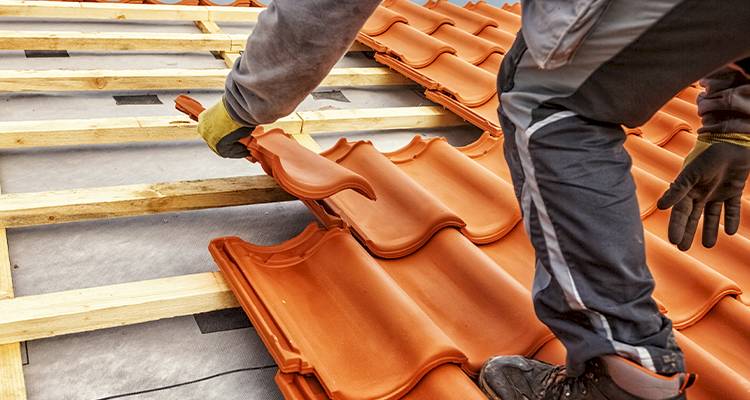
If you're looking for low-cost roofing materials, the roof tile is an excellent option! However, one tile can cost £1; the higher your roof, the bigger the cost.
Roof Tiles Made of Slate
For a long time, roof shingles have been used as roofing materials. However, artificial slates have recently gained popularity due to their lower cost than roof tiles.
Natural slates are more expensive, but they last forever and attract less moss. The material determines the price, and the surface was chosen. This type of supply costs £95 - £100 per m2.
Thatched Roofing
A thatched roof exudes charm. It can be installed in either an open or closed construction. Each type has advantages and disadvantages. This type of roof covering has a 35-year lifespan.
Reed has a high insulation value, making insulating unnecessary in most cases. This typically costs £32 in materials.
EPDM Rubber Roofing
EPDM (Ethylene Propylene Diene EPDM is a rubber compound. This roofing material has numerous benefits. It is low maintenance, lasts a lifetime, does not crack, and can be walked on all year. However, it is the most difficult to install roofing material and costs £15.
| Type of Roof Material | Cost |
|---|---|
| Tiles | £1 per tile |
| Slate Tiles | £95 - £100 per m2 |
| Thatched roofing | £32 |
| EPDM rubber roofing | £15 |
Additional Costs
There are numerous tasks to complete when it comes to roofing your home for the first time. Aside from the actual roofing process, several other activities must be completed, and each activity has a cost.
Additional tasks that will require payments are factors such as the application for permits, scaffolding, flashing, wood-based sheathing, and the removal of any existing roofs. We will go over any additional costs that you'd be aware of when installing a new roof in this section.
Scaffolding Costs
The cost of hiring scaffolding varies according to the amount of scaffolding required. This is a combination of your property's type and the work done. You will also be required to hire the scaffolding for six to eight weeks.
Suppose all you need is a small tower. This would be to finish a job such as repairing hip tiles or guttering. You can expect to pay anywhere between £640 and £1,210 for the entire hire.
The cost of hiring scaffolding for a large project, such as painting the outside of a detached home, will be much higher. You should plan on spending between £7,500 and £11,500.
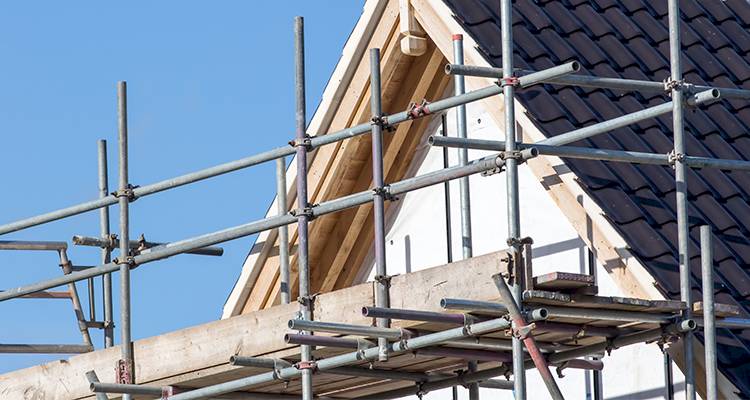
When you hire scaffolding, you will be charged according to several factors. First, you will have to pay for the hire of your scaffolding and have it put up and taken down.
This, combined with the type of job you require the scaffolding for, results in a wide range of scaffolding hire costs. In most cases, you will usually be charged per week that the scaffolding is rented.
If you would like further information, please refer to our guide on the costs of hiring scaffolding.
Removing Asbestos from a Roof
Because of its ability to take in sound and provide thermal insulation, asbestos was once one of the most popular building materials. But unfortunately, the harmful side effects were not discovered until much later. Today, we understand that the many dangers of asbestos far outweigh any potential benefits.
If you have even the slightest idea that asbestos may be present in your home, make sure you find a professional in your area who has the necessary qualifications and experience to analyse the safety impact and carry out the safe removal if necessary. Typical asbestos roof removal costs will cost £2,000 - £2,500.
If you would like further information, please refer to our guide on the costs of removing asbestos from a roof.
Solar Tiles
Solar panels are now almost common on UK roofs; solar energy has evolved over the last few years, and prices have dropped dramatically, making them cost-effective for almost all homeowners to install.
New and improved technologies have also increased their efficiency, resulting in higher power output and a longer lifespan. Solar panels now appear sleeker and more futuristic than they did previously. This typically costs between £2,000 and £14,000 to install on your roof.
If you would like further information, please refer to our guide on the costs of fitting solar roof tiles.
Fascias and Soffits
Most roofs have fascias attached to the rafter edges and soffits that fill in the gap between the fascia and the roofline. Fascias are effectively exposed to the elements, whereas soffits are partially shielded from the elements by fascias.
The cost of capping fascias and soffits varies greatly depending on the layout and size of your home. To seal the fascias and soffits on an entire three-bedroom house will cost around £200 in materials and around £600 in labour, with the job taking about one day, assuming no complications or setbacks.
The size of the soffits should also be considered. For example, if you live in a tall home that isn't particularly large in surface area, you'll naturally require fewer materials to cap your home. Similarly, the price will rise if the opposite is true for buildings such as bungalows, which tend to cover more land.
If you would like further information, please refer to our guide on the costs of capping fascias and soffits.
Gutter Cleaning
The average cost of having your guttering cleaned is between £100 and £425 (depending on the size of your guttering). The cost is determined by the size of your property and, as a result, the length of the guttering.
Cleaning the guttering on a two-story semi-detached house will cost around £100. The size and type of guttering can also impact the overall cost of the job.
The total bill is affected by the type and size of the house and the length of the guttering. Another factor to think about is your location in the United Kingdom. Because contractors charge different rates in different markets across the country, the cost of gutter cleaning can vary depending on where you live.
If you would like further information, please refer to our guide on the costs of cleaning your guttering.
Labour Costs and Timescales
Installing a roof from scratch takes time, depending on the shape of your home, the materials used, the skill of your tradesman, and whether any additions are required.
Roofing typically takes 24 hours to complete and can take up to three days. In some cases, such as non-residential buildings, the three-day deadline is increased, and the project may take about a week to complete. The number of days required for roofing will determine by the size of your area.
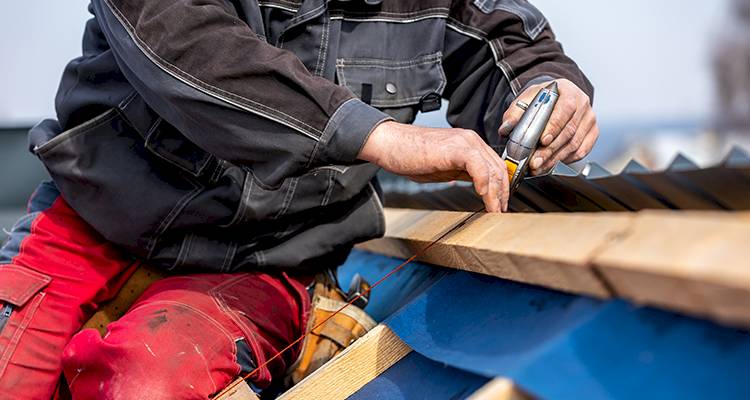
The bigger the building, the larger the roofing surface area, and thus the longer the roofing will take. The number of people involved in the roofing process can either speed up or slow down the process.
For various reasons, roofing labour comes in a variety of price ranges. The first reason is that tradespeople can be found in various locations. As a result, they may be less expensive the closer they are to you. Another factor contributing to the disparity in charges is skill set.
Some tradesmen have more experience than others. Therefore, they can charge more. The usual price range for roofing labour is between £150 and £300 per square.
Cost Factors of Installing a New Roof
Many factors could affect your new roof installation cost. Here we will break down the different factors that could affect the overall cost to see if you will be affected.
Roof Sizes
The greater the size of the roof, the greater the cost of repair or replacement. This also applies to the height of your property, as taller buildings will require more scaffolding to support roofers while they work, raising your access costs significantly.
Material Types
The materials you use and the quality of those materials. If you want to keep the current tiles because they are historical, the cost of carefully removing and stacking them for re-use may be more expensive due to labour than re-roofing with new materials.
The size of the tiles also matters; smaller tiles take longer to install and increase labour hours.
Changes in Structure
Your roof replacement may necessitate structural changes, such as re-establishing an old pitched roof that was pitched too low and needed to be re-established to prevent damage from the elements.
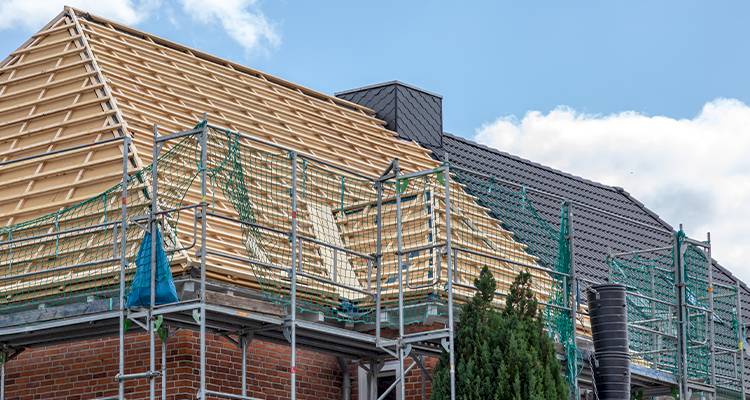
This will necessitate scaffolding and additional skip hire, and additional precautions to ensure everything is completed following building regulations, which will increase the time it takes your contractors to complete and the price you'll have to pay to have it done.
Access
A roofing contractor may involve scaffolding to be erected depending on the layout of your property, which can cost up to £1,000 on a large family house.
What's Involved in Fitting a Roof?
If you intend to stay in your home for years, a new roof is an excellent investment. People will spend a small fortune patching up the same roof issues year after year, even though they will live in them for an extended period. But what is involved in fitting a roof? We'll go over everything you need to know right here.
The process of installing a new roof will begin with a thorough examination of the existing roof and determining which items will be used or re-used. The installers will then order new materials and deliver them to the job site, along with a skip for disposing of all waste material.
Scaffolding may be required and can be quite expensive, depending on the severity of the job. The existing roof materials must be carefully stripped and removed, beginning with the ridge tiles at the top of the roof.
The roof timbers and tile laths are exposed as slates and tiles are passed down. Finally, the laths are removed, revealing the main structure.
The timbers are now covered with a breathable felt layer layered from the bottom of the roof up. This allows any moisture or rain that has penetrated the roof due to a broken tile to fall down the roof and into the gutter. It functions as a second shield. As there are no tiles on the roof, the roof is watertight.
Tile battens are secured in place with galvanised nails of the appropriate gauge based on the size and type of tile. These are what make up the 'rows' of tiles. These must be properly spaced to allow for a proper crossover of each tile or slate.
The roof tiles or slates have now been installed on the battens. Concrete tiles only need to be fixed at regular intervals, whereas slates without hanging nibs must be fixed with individual nails. Any tiles in contact with valleys or roof windows are cut to size.
Any 'first fix' leadwork, such as soakers or secret gutters, is installed and covered with tiles. Any remaining leadwork, such as flashings, has been completed, and ridge/hip tiles have been bedded with fresh mortar to make your new roof completely watertight!
Can I Install a New Roof Myself?
If your roof needs to be replaced, it may be tempting to do it yourself. Saving money is a common motivator, and there are now YouTube tutorials for almost everything, from replacing guttering to shingling a new roof. The cost of hiring a roofer can vary.
On the other hand, roof repairs are near the top of the list of jobs that should always be left to the expert roofers, even though many DIY jobs can be easily done by homeowners. We'll go over the benefits of hiring a roofer in this section.
Repairing a roof entails working at a considerable height, and while this may appear simple, it is often extremely dangerous, and it should only be attempted by others who have received the necessary training.
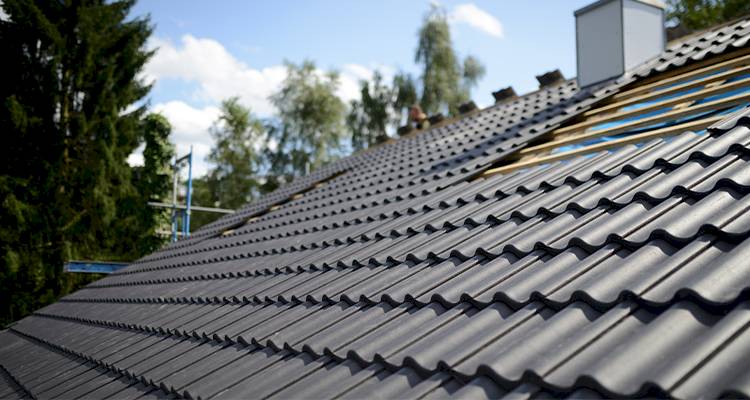
Not only will you need to conduct a thorough risk assessment, but you will also require the appropriate equipment. Professional roofers will bring their own ladders, fall arrest equipment, as well as personal protective equipment, which is all required for the job to be done safely.
Because of their training, they also know which portions of your roof are dangerous to stand on. You should never jeopardise your safety.
When done correctly, a well-maintained roof adds a layer of class and elegance to a home. While it's not always the first thing, people notice when they first see a house, if it's poorly installed, you can bet they'll notice it.
Unevenly installed tiles and rippling shingles are indications of a poor job. In most cases, these signs will be obvious right away. Do you really want to take the risk? It's not worth attempting the job yourself, especially if you're going to sell your home soon.
Building Regulations & Planning Permission for Roof Installation
If you're about to start a roofing project but aren't sure if you need to apply for planning permission, here are a few guidelines to follow to ensure your project doesn't require any planning permission:
- The amount of change you can make to the existing roof plane is limited to 150 millimetres.
- No changes should be made higher than the top portion of the roof.
- Any side-facing windows should be obscure-glazed, and any openings should be at least 1.7m above the floor line.
- The solar panel development regime imposes various projection limits in relation to protected areas.
- Following these guidelines will assist you in determining whether you need to seek planning permission.
Planning permission is not required if you are simply repairing the roof. However, to keep things straightforward, the overall rule for best working practice is that if you're changing anything about your roof, you should always notify your local council first.
They will advise you on what is best to do to be confident that you are adhering to all regulations and procedures.
If you need approval, a Building Control Officer would then come to the site and give you instructions on what materials and methods to use. Another visit will follow this once the work is completed.
Checks to make sure that certain criteria are met will be performed, followed by a final sign-off for complete approval.
Failure to complete these stages could result in hefty fines and even difficulties selling your property! As a result, it is always easier and safer to follow regulations to avoid future complications.
Types of Roofs
Depending on the architecture of a home, the roof can make up to 40% of the exterior, often playing a significant role in the overall appearance and curb appeal.
When the time comes to replace your roof, choose roofing materials and shingle colours that complement the shape or slope of your roof and the exterior design of your home.
This section will discuss the various roofing types and their benefits and drawbacks.
Gable Roof
Gable roofs are known as pitched or peaked roofs. These roofs have two sloped sides that meet at the top to form a ridge. Their triangular shape distinguishes them. Gabled roofs come in various styles, but the most common are open gable and box gable.
PROS
✔ Because of the higher slope, this roof can quickly shed both water and snow, making it suitable for areas with heavy rainfall or harsh winters
✔ Gable roofs are frequently less costly than traditional roofs
CONS
✖ Builders do not recommend gable roofs in areas prone to high winds or hurricanes
Hip Roof
Hip roofs are made up of slopes that form a ridge at the top. Hip roofs have four slopes rather than two. The slope's pitch and the size of the ridge can vary from house to house.
In some houses, the slopes all meet at a point on top of the roof, resembling a pyramid shape. In others, the roof may be made up of several ridges, commonly referred to as the hips or valleys of a roof.
A ridge vent is an excellent way to use the ridges of a hip roof. This simple and low-cost addition will ensure that your attic is properly ventilated.
PROS
✔ Hip roofs are more stable as they have four slopes instead of two
✔ These roofs are a better option for windy areas because they are slightly sturdier. In addition, the slope, like gable roofs, allows water and snow to move easily off the roof, deciding to leave little to no standing water
CONS
✖ Because hip roofs have four slopes rather than two, the construction cost for this roof style may be slightly higher than for gable roofs
✖ This roof style comprises a complex system of trusses and rafters, which may result in a longer construction period
✖ Hip roofs necessitate the use of more building materials. With the cost of labour and materials, the price can quickly add up
Mansard Roof
Mansard roofs are four-sided roofs with two slopes of varying pitches on each side. Lower slopes have a steeper pitch than upper slopes and are frequently adorned with dormer windows.
PROS
✔ Mansard roofs are an excellent choice for homeowners looking to expand their living space
✔ If you do not want to add an attic or an extra floor, mansard roofs can be used to create higher, vaulted ceilings
CONS
✖ Mansard roofs are not suitable for areas with heavy snowfall due to their double-sloped architecture and relatively gentle slope
✖ Mansard roofs are also more expensive than other types, and the installation process is typically longer
Gambrel Roof
Gambrel roofs have double-sloped sides, like mansard roofs; however, this style only includes two sides of the home, whilst mansard roofs cover four.
PROS
✔ Provide additional space for an additional floor or garret. Because of this, gambrel roofs are very popular in barns and sheds
✔ They can provide extra storage without taking up any extra space
CONS
✖ This style is not suitable for areas prone to heavy snow and rain, as the extreme pressure exerted by these elements can cause the roof to buckle.
Hiring Contractors to Install a New Roof Checklist
A new roof is a significant investment, so it is prudent to ask a few questions before hiring a roofing contractor. Getting estimates from contractors is simple, but the contractor who promises to complete the job the quickest and cheapest isn't always the best option.
When looking for a reputable roofing company, asking a few questions and researching will ensure that you will get the best roof for your money.
References for Contractors
You know you should ask for references from contractors, but most contractors only provide a list of happy customers with their work. Instead, request a list of the contractor's most recent three clients.
It's critical to speak with recent clients because their experiences are a good predictor of what you can expect.
Insurance Documentation
To protect his clients from unforeseen events during the project, a roofing contractor should carry commercial liability insurance. When submitting a proposal, many contractors will include a certificate of insurance.
Qualifications of the Manufacturer
Some roofing material manufacturers require special training and/or credential before allowing a contractor to install their products.
Inquire with the contractor about the roofing products that the company is qualified to install. The more roofing products a contractor is certified to install, the more likely you are to get the best product for your roof.
Sheets of manufacturer's specifications: inquire with the contractor if he has copies of the manufacturer's specification sheets.
These sheets detail the proper installation methods, and which fasteners, adhesives, and other materials are compatible with the roofing product.
The specification sheets will come in handy when it comes time to inspect the roof in the future.
FAQs
How long does a thatched roof last?
Which is the best roof type?
Why does a roof need maintenance?
How often does a roof need replacing?
How to know if your roof needs replacing?
Sources
https://loftera.co.uk/blog/new-roof-cost/
https://www.roof-info.co.uk/roofing-materials
https://www.roofingmegastore.co.uk/blog/calculate-roof-area.html
https://www.brownsladders.co.uk/blog/should-you-attempt-your-own-roof-repairs/
https://jtcroofing.co.uk/news/roof-require-planning-permission/
https://distinctivemetalroofing.com/the-pros-and-cons-of-four-different-types-of-roofing-styles/
https://naroofing.com/2014/08/15/checklist-questions-ask-hiring-roofing-contractor/


